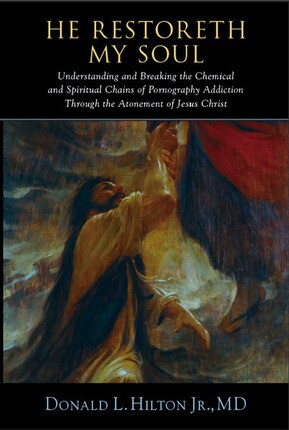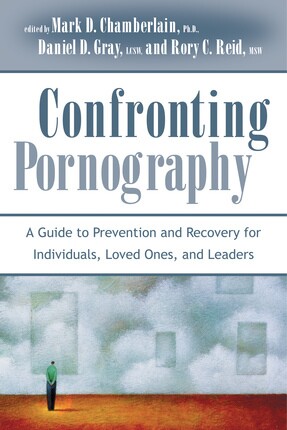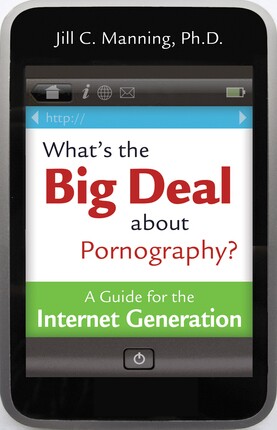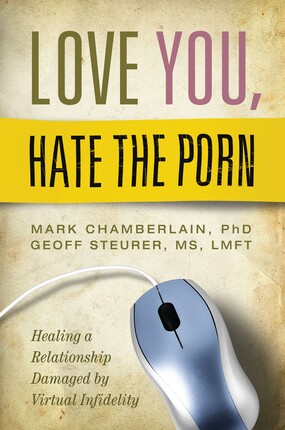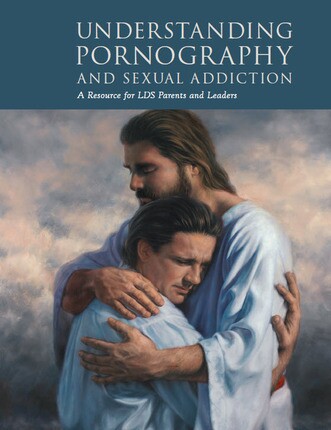Ironically, the very methods we use to encourage purity in our children sometimes drive them into pornography addiction instead of helping them navigate inevitable exposure and missteps.
The Callahan* family may have been justified in thinking they’d never go through the heartbreak of addiction, betrayal, and divorce: they had married in the temple, had faithfully taught the gospel in their home, and had seen their children off on missions and sealed to their own spouses in the temple. They had just celebrated a wonderful Christmas break together with all their kids and grandkids, and all was right with the world. But just days later, their son Brandon sent an email to his parents and siblings that destroyed their peace. “I have betrayed my family,” Brandon wrote. “[Melly] and I are likely to get a divorce because I cheated on her. There is a lot more to tell, about who I am now and how I got here, but the bottom line is that for now I will be leaving the Church. I am sad about dishonoring all of you with this, and my heart is broken for hurting and losing [Melly.] My heart has been breaking for a long time.”
Brandon’s shattered family struggled to put the pieces together about the guy they loved and thought they knew. A pornography addiction spanning 16 years, more than half his life, surfaced. The marriage did not survive, and neither did Brandon’s faith in God.
► You'll also like: What (and What Not) to Say to Someone Struggling with Pornography
It is a story that has become all too common recently, and Latter-Day Saints are often left shaking their heads over how easily a pornography addiction is able to take root in a community that so vocally decries sexual sin of any kind. While such things have proven difficult to quantify, Latter-day Saint communities have similar rates of pornography consumption to those outside the faith and may even have a higher rate of addiction due to a culture of fear and shame surrounding sex. Ironically, the very methods we use to encourage purity in our children can sometimes drive them into pornography addiction instead of helping them navigate inevitable exposure and subsequent missteps.
► You'll also like: The Perfect Thing My Husband Did When He Discovered Pornography on Our Child's Device
Generations of parents have used shame and fear to motivate their children from cradle to adulthood, creating a strong tradition of teaching that can still be found in families, schools, and workplaces everywhere. However, recent groundbreaking work in shame psychology has begun to illuminate the harmful effects of these methods, particularly the fact that shame creates conditions that often lead to addiction. This is primarily because of the hopeless nature of shame. Where guilt is a transitory feeling of having done wrong that prompts one to change, shame is a lasting feeling of being wrong, a state of hopeless inadequacy. As Brené Brown, a leading expert in the field of shame psychology, noted, “Shame corrodes the very part of us that believes we are capable of change. Shame erodes our courage and fuels disengagement.”
Modern psychology points to more effective leadership based on openness and compassion. Parents looking to raise healthy children find more success by encouraging an honest dialogue and treating mistakes gently.
It Started with Shame
Asked about the shame of his addiction, Brandon doesn’t really talk about when it started at age 13. He talks about shame in early childhood.
“Self-loathing is how I remember it. I remember looking in the mirror all the time . . . thinking that I was the most ugly person that I could imagine. It was who I was. I could see it in the mirror. I could see why I was frustrating to Mom. Or to my teacher. . . . Shame wasn’t just, like, in church. [Shame] is why I obey. It was basically a whole identity. This is who I am. This is how I relate to every part of the world— inferior, broken, not really lovable in the same way.”
Despite being raised in the Church, the constant feelings of shame and embarrassment that Brandon suffered as a child set him up for whatever addiction might present itself. Like all other addictions, pornography addiction is nothing more than the inability to manage pain in healthy ways.
In a recent interview, Geoff Steurer, founding director of LifeStar of St. George, Utah, a treatment program for couples and individuals impacted by pornography and sexual addiction, illuminated the link between shame and addiction.
“Shame is so painful and punishing that you have to mood alter,” he says. “Because shame basically is . . . the most painful feeling you can have, researchers refer to shame as the master emotion.”
Children living in shame will find ways to self-medicate—some with food, books, or video games, but those who discover their own bodies as a means of escape will find the powerful sexual experiences difficult to avoid once they’re started, especially if they don’t feel safe talking with loved ones about these experiences.
Partly to blame is a wider culture of fear and shame around sexuality that especially flourishes within the Church and in other communities of faith. Some of it is natural and healthy, forming proper boundaries and social norms. However, much of the shame and fear around sexuality can backfire when it drives secrecy, which is an essential component of addiction. Furthermore, fear of sex, and specifically of pornography, can impair our ability to make rational decisions. Fear shuts down the frontal cortex, which forces us to rely on our impulses rather than our better judgement. Studies have shown that fear even increases sexual drive, contributing to poor judgement in the face of sexual stimuli. Parents teaching their children to be afraid of pornography may actually be impairing their ability to fight against it.
► You'll also like: Official Church Resources for Teaching Children About Pornography
Shame sets us up for addiction first by causing pain and then by cutting us off from the relationships that can help us navigate and heal from pain. Brandon struggled with early shame: shame around sexuality, and shame of his hidden sins—all of which fed the shame cycle.
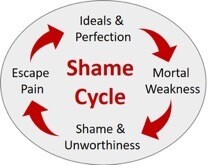
Recently, at the convention of the Utah Coalition against Pornography, Elder Anthony D. Perkins, a General Authority Seventy, explained the shame cycle within the context of addiction. The shame cycle sheds a great deal of light on Brandon’s story. Growing up in the Church, Brandon had high ideals of morality and perfection. When he failed to live up to them because of his mortal weakness, he was filled with a deep sense of shame and unworthiness. This shame was so painful that he was driven to self-medicate his pain using his addiction. He would return to his high ideals after acting out, promising himself never to falter again, but the cycle always continued spiraling back to the addiction, each round of failure further reinforcing Brandon’s deep shame.
“We need to strive for homes and places of worship that are shame-free zones,” Elder Perkins asserts. “Jesus Christ never shamed anyone, anywhere, anytime, ever. Shame is a tool the devil uses to keep addicts as addicts.”
Families raising children with a healthy sense of identity handle failure and sin with greater resilience and are able to avoid the destructive cycle of shame and addiction.
Creating a Culture of Safety and Honesty
Of course, the best time to begin interrupting the shame cycle is right now, no matter how young or old our children are. We can begin to build family cultures of safety and honesty by learning to recognize shame in our loved ones and helping them find safer ground; by valuing honesty above purity, expecting to hear about mistakes, and being open with our own; and especially by cultivating hope in a bright future.
Identify Shame and Build Bridges Back
This can be tricky because kids are good at masking their shame, and adults are even better. Parents who notice unusual or extreme behaviors or ideas—such as perfectionism, isolation, overeating, etc.—should ask some good questions. Especially with younger children, simply helping them find the right names for their feelings can be powerful in “building a bridge back” to a healthy identity, as Steurer says:
“This will have nothing to do with pornography; this has to do with shame, which is really learning how to see your child as an individual, with feelings, ideas, thoughts, experiences, [and] reactions that are different from your own. Be curious about them, make space for them. When they feel that sort of love and affirmation and sense of ‘I matter to this person’ when they have experiences that don’t match the prescribed expectations that we’re taught at church or that you’re teaching at home, they know they’re valued and loved and they’re not going to be condemned. And that will create a bridge so that kid can talk about what’s happening in their body, so the parent will have access to their inner world. This problem is all about the inner world."
Value Honesty Above Purity
“No news is good news” absolutely does not apply here; parents should expect to hear about their children’s sexual feelings, temptations, triggers, and mistakes. A child who shares that a movie triggered him should expect to hear his dad say something like, “Yep, that’s normal. Of course you want to look. Who wouldn’t? How did you deal with that?” Of course, parents don’t condone sin or unhealthy behaviors, but they can sympathize with sexual feelings, thoughts, and actions because every normal person experiences them. This normalization of sexuality is a powerful antidote to shame.
► You'll also like: Fighting the Battle Against Pornography
Creating a shame-free environment begins with deep honesty within the safety of loving relationships, and kids will best learn to be open with parents who are open themselves. Parents who share their own stories are better able to help their kids navigate new experiences, deal with mistakes, and make course corrections. Steurer points out that we can take advantage of the years between the onset of puberty to adulthood to learn healthy sexuality, preparing ourselves to experience what is really a much more advanced sexuality—within the bonds of marriage. We should expect mistakes, he says. They are sometimes the best learning opportunities. And kids who are afraid of failing are more likely to fail here because of the powerful link between fear and arousal. So parents who teach their children about sexuality in positive ways, who talk about pornography exposure as something to be expected and dealt with, and who treat mistakes with gentleness and understanding will empower kids in their fight for purity.
Many teens fear talking with their parents about occurrences of masturbation or pornography for fear of being “turned in” to the bishop. These fears and secrets can drive teens into addiction when they could have been okay with parental guidance. Parents should feel comfortable counseling with children about individual occurrences and help kids feel good about meeting with the bishop or professional counselor if patterns or addictions seem to be forming.
Above all, kids should know that their parents can handle anything they need to talk about. Parents should emphasize that they’d rather hear about struggles than believe their kids are perfect. Parents can create an affirming culture by admitting when they make mistakes and showing their children that mistakes are how we learn and grow.
Keep Hope Burning
In the face of the trauma and pain sexual addiction can cause, it can be difficult to hope for a bright future. But Steurer, after long experience working with recovering addicts, has seen great healing and change. “That whole business of ‘once an addict, always an addict’—I don’t buy it,” he says. A man fighting a pornography addiction today will focus on not looking at pornography; next year, he’ll be working on avoiding lustful thoughts; in five years, he’ll be accountable for how honest he is about his feelings. He gets so used to swimming upstream that he just never stops, finally ending up miles from the guy who was never addicted. Recovering addicts often become the healthiest, happiest people and the best spouses—because they have learned to be accountable and to cultivate good relationships. As St. Josemaria Escriva wrote, “The struggle is the sign of holiness. A saint is a sinner that keeps trying.”
► You'll also like: Latter-day Saint Woman Shares Her Battle with Pornography in New Video
The best news of all is that we have a better understanding of how to raise healthy, happy kids than any previous generation. As we create shame-free zones in our homes, churches, and schools, our kids will be empowered not only to avoid addiction but to create deep and lasting relationships with those around them. The fight for freedom in our sexuality will provide peace and freedom in all other areas of life.
*Names have been changed.
There are many resources available for Latter-day Saint families. See below for some suggestions.
Jill C. Manning, Ph.D., is a licensed marriage and family therapist who specializes in research and clinical work related to pornography and its impact on marriages and families. In What’s the Big Deal about Pornography?: A Guide for the Internet Generation, Manning speaks directly to young people and addresses such topics as:
· What is pornography?
· How does pornography affect people?
· Can pornography teach me things about sexuality that I need to know in the future?
· What do I do if I can't stop looking at pornography?
· What do I do if someone I know can't stop looking at pornography?
· 11 suggestions teens should talk to their parents about
How does pornography harm a marriage?
“It may be cybersex, but it can feel like real infidelity to your partner,” says authors Mark Chamberlain and Geoff Steurer. “There's nothing virtual about the damage pornography does to a relationship.”
The good news is that the marriage itself can be a couple's most powerful tool in healing in a pornography habit. This helpful, informative, and insightful book will help couples learn how to harness that strength to make their marriages more fulfilling than they ever imagined possible.
Love You, Hate the Porn helps couples draw together when pornography is threatening to tear them apart.
· Shows couples how to identify and address vulnerabilities in their relationship.
· Offers healing advice for spouses.
· Provides help for the struggling partner to avoid relapse.
· Focuses on how to make the marriage relationship strong than it was before.
Technology has accelerated our fascination with pleasure. Indeed, the power of pleasure has been underestimated, and Internet pornography is changing the world in a fundamental way.
In this book, author Donald L. Hilton Jr., MD explores the destructive power of pornography addiction, not just from a moral and spiritual perspective, but with the scrutiny of modern science. Current research tells us that there is little difference in physical or chemical changes in the pleasure and control centers of the brain regardless of whether the addiction is "from a chemical or an experience," as stated in the journal Science. (Constance Holden, "Behavioral Addictions: Do They Exist?" Science, 294 [5544] 2 November 2001, 980.)
Relying on the latest research on addiction, and merging this knowledge with spiritual aspects of repentance and recovery, the author provides understanding and hope to those who seek healing and restoration of both body and spirit, which are the "soul of man."
The plague of pornography is real, and it is growing. For those who are trapped by its power, the way out may seem impossible. President Gordon B. Hinckley spoke directly to those individuals struggling with an addiction to pornography: “May you plead with the Lord out of the depths of your soul that He will remove you from the addiction which enslaves you. And may you have the courage to seek the loving guidance of your bishop and, if necessary, the counsel of caring professionals.”
Confronting Pornography is a collection of chapters and essays from professional counselors and Church leaders, as well as from people who have overcome the addiction. This book is designed to offer help to those individuals caught in pornography's clutches and hope to all those who love them.
